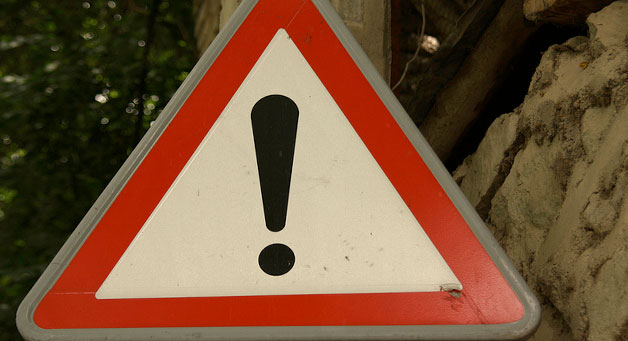I am on a mission to help 10,000 educators become extraordinary.
This is about something quite important. I am asking for feedback, which has one of the highest effects on achievement. When you give feedback, you will be rewarded. Please share one of three things in a 1-page note.
- How you’ve added more engagement strategies
- How you’ve used working memory strategies
- How you’ve been building mindsets
Here’s how this works: Share a true story of how you have used any of these three topics above (engagement, working memory or mindsets) at your school. I want the details! Here’s what you get in return. I will send you something awesome you can use (it’s a secret). Just email me at eric@jensenlearning.com
For now, you can get rewarded this month by learning 7 great ways to…
7 Ways to Consistently Get and Keep Student Attention
I’ll share a simple list. Before you read it, please do not confuse fluency (something that is easy to read) or familiarity (you have heard them before) with real-life action. (Are you currently using each and every one of these tools?)
Attention is simply a focused arousal state. Most of your everyday attention is driven by your brain’s hard-wired arousal processes. For example, you hear a loud BANG and your head turns to pay attention. That sound is a known danger sound, and it presented itself as a contrasting (loud vs. quiet) noise level. The same thing happens when a student screams, cries or yells; it’s a contrasting noise level with a known sound associated with possible bodily harm or pain. Our brain is wired to PAY ATTENTION to contrasts in the environment that is alerting the brain to potential danger.
Our attentional arousal is facilitated by serotonin when we are not in an emergency mode. During stress, our brain bumps up cortisol. When things are more urgent, our brain may produce noradrenaline. When we anticipate something good, we’ll have more dopamine available in our brain. These chemicals are only mentioned as a “soft” generalization. In reality, your brain has varying levels of dozens of chemicals at any given time.
We can train our brain to respond to certain types of environmental input. For example certain professions (e.g. musicians, doctors, sound engineers, thieves, special forces, and hunters) have trained their brain to be alert to specific auditory input. A newborn learns to pay attention to his or her caregiver’s voice since it is the presence of the caregiver that often means food, human contact and fresh diapers.
Our brain is also highly susceptible to everyday attentional arousal for curiosity. We watch others and listen to stories and jokes to find out what happens next. Movies, stories and television writers continually work to find the attentional hooks so you keep watching a show or reading a book. Getting students to pay attention for a moment is actually pretty easy. It does not guarantee learning, but attention is an important start.
Here are 7 ways to get attention.
1. Switch pacing often
Speed up or slow down. Mimic another person’s accent or use a quote that everyone thought was outrageous. Switch mediums (play a recording or show a movie clip, slide or YouTube video). Pause for a few seconds, then end a sentence with a “ta-da!” A good rule of thumb is to switch things up every 10-12 minutes or so.
2. Ask compelling Questions
Open your presentation with questions that are a bit quirky or trivial. Use odd facts to hook in your students. For example, you could ask, “How many of you would like to find out who was the real hero of the civil war?”, or “How many of you would be surprised to find out that our military was tricked in to starting a war?”
3. Use physical objects relevant to the content
When I speak about brains, I often use a real human brain (injected with resin, so it’s hard) to share with my class. These are extremely hard to get a hold of. I’m sure you can find props at a local thrift shop or Wal-Mart. Your props might include a hat, scarf, sunglasses or jacket that fits a character.
4. Boost arousal with a quick energizer
Our brain is much more receptive to new information when our alertness level is higher. Get students up and out of their seats. Have students lead small teams (or, when they’re ready and able, the whole class) in an energizer.
5. Create a “cliff-hanger” opening
Share an opening comment that leaves everyone wanting more. You can post it up front or use an electronic device to post it. This gets students curious and focused right away on content.
6. Establish learning jobs
Prior to the class content, put students in learning groups (or teams), and then post up 5 or 6 learning roles for students. These roles might include a team leader, an energizer leader, a summarizer, and a relevancy specialist. Each of these can create varying levels of attentional arousal as the jobs get done during the class.
7. Share personal stories
Most students are interested in knowing the person behind the profession – YOU. Tell a real story about your past, an incident or specific unusual experience you had that relates to the content being taught. This creates an attentional hook because of the connection felt to the person or emotions of the story.
In closing, you CAN have the best school year of your life. Implement ideas from this monthly newsletter and get ready for a miracle!
Feedback for me about this information? Just drop me a note: eric@jensenlearning.com
Your partner in learning, Eric Jensen
CEO, Jensen Learning
Brain-Based Education

